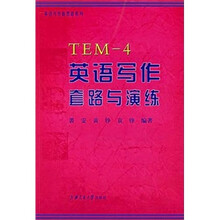Chapter One Brainstorming and Outlining(头脑风暴及提纳挈领)
1 Brainstorming(头脑风暴)
1.1 Animals(动物)
1.2 Communication(交流)
1.3 Cooperation and Competition(竞争与合作)
1.4 Economy(经济)
1.5 Education(教育)
1.6 Environmental Protection(环境保护)
1.7 Euthanasia(安乐死)
1.8 Family(家庭)
1.9 Friendship(友谊)
1.10 Groups or Organizations(组织)
1.11 Happiness(幸福)
1.12 Health(健康)
1.13 Independence(独立自主)
1.14 Information(信息)
1.15 Knowledge and Experience(知识与经验)
1.16 Love(爱心)
1.17 Mistakes(错误)
1.18 Music(音乐)
1.19 Science and Technology(科技)
1.20 Stress(压力)
1.21 Travel(旅游)
1.22 Work(工作)
2 Outlining(提纲挈领)
Chapter Two Coherence(挥笔流畅)
1 Sentence Coherence(句子连贯)
1.1 Sequence(顺序)
1.2 Cause or Reason(原因或理由)
1.3 Result(结果)
1.4 Illustration(举例)
1.5 Comparison(相似比较)
1.6 Contrast(差异比较)
1.7 Concession(让步)
1.8 Conversion(转折)
1.9 Condition(条件)
1.10 Exception(例外)
1.11 Purpose(目的)
1.12 Place(地点)
1.13 Restatement(复述)
1.14 Feelings(情感)
1.15 Conclusion(结论)
1.16 Time(时间)
2 Paragraph Coherence(段落连贯)
2.1 Opening Paragraph(开头段)
2.2 Concluding Paragraph(总结段)
2.3 Body Paragraph(主体段)
Chapter Three Compositions with Outlines and Patterns(谙熟套路)
Chapter Four Rhetorical Devices(妙语连珠)
Chapter Five Compositions with Patterns and Rhetorical Devices(范文集锦)
Chapter Six Note Writing(便条写作)
……
Chapter Seven Previously-Tested Compositions and Notes(实战回顾)

 缺书网
缺书网 扫码进群
扫码进群





